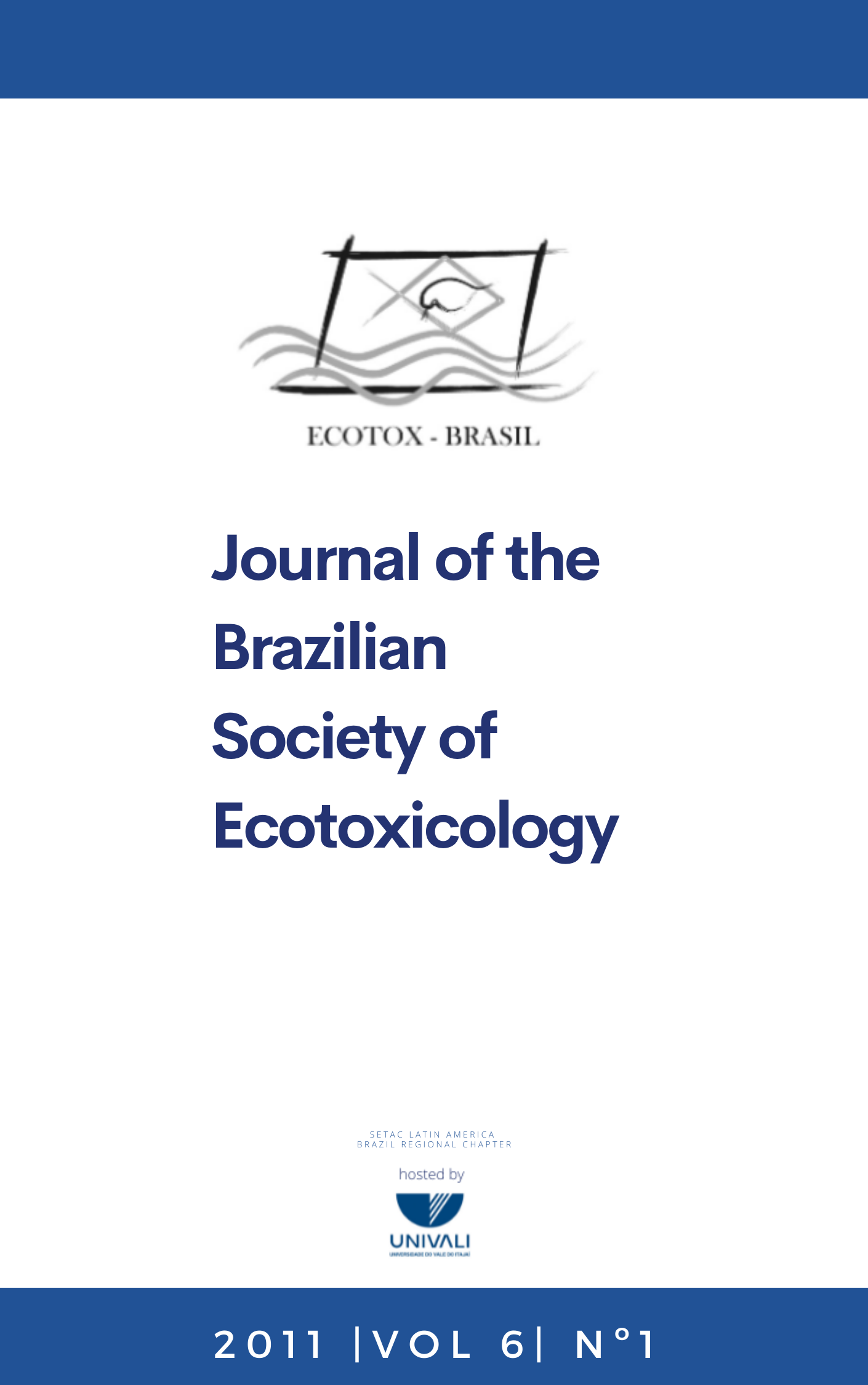Ecotoxicity Assessment of Suzano Wastewater Treatment Plant (São Paulo) Using Daphnia Similis and Vibrio Fischeri
Resumo
Population growth and industrial development generate pollution to water resources far above their assimilation capacity. The environmental control agency, (CETESB) ensures 27 sites for monitoring toxicity at Tietê River (Alto Tietê), and priority is given to water supply sources. Few data is available on toxicity monitoring of waste water treatment plant (WWTP) from São Paulo. The objective of this study was to evaluate the toxicity of affluent and effluent of Suzano WWTP, assessing the reduction in toxicity. Five samples were taken from September 2005 to March 2008. A complete removal of acute toxicity for D. similis was obtained but for Vibrio fischeri the efficiency of treatment was not the same. With this luminescent bacteria, the average efficacy of SWWTP was 57.90%. Comparison among studies evidenced less toxicity in the present as a result of some efforts done by the São Paulo Water and Sewage Company (SABESP).
Keywords: Daphnia similis, effluents, wastewater treatment plant, toxicity, Vibrio fischeri.
Downloads
Downloads
Como Citar
Edição
Seção
Licença
Copyright © 2006 ECOTOX-BRAZIL
Copyright notice: It is a condition for publication that manuscripts submitted to this journal have not yet been published and will not be simultaneously submitted or published of elsewhere. By submitting a manuscript, the authors agree that copyright for their article is transferred to the Sociedade Brasileira de Ecotoxicologia (ECOTOX-Brazil) if and when the article is accepted for publication. The copyright covers the exclusive rights to reproduce and distribute articles, including reprints, photographic reproductions or any other reproduction of a similar nature, including translations. No part of this publication may be reproduced, stored in a retrieval system or transmitted in any form or by any means, electronic, mechanical, photocopying, recording or otherwise, without permission of the publisher.
Notice: While every effort is made by the JBSE, editors and editorial board to see that no inaccurate or misleading data, opinions or statements appear in this journal, they wish to make it clear that the contents of the articles and advertisements published herein are the sole responsibility of the contributors or advertisers concerned. Accordingly, the JBSE, the editorial board and editors and their respective employees, officers and agents accept no responsibility or liability whatsoever for the consequences of any inaccurate or misleading data, opinion or statement.




